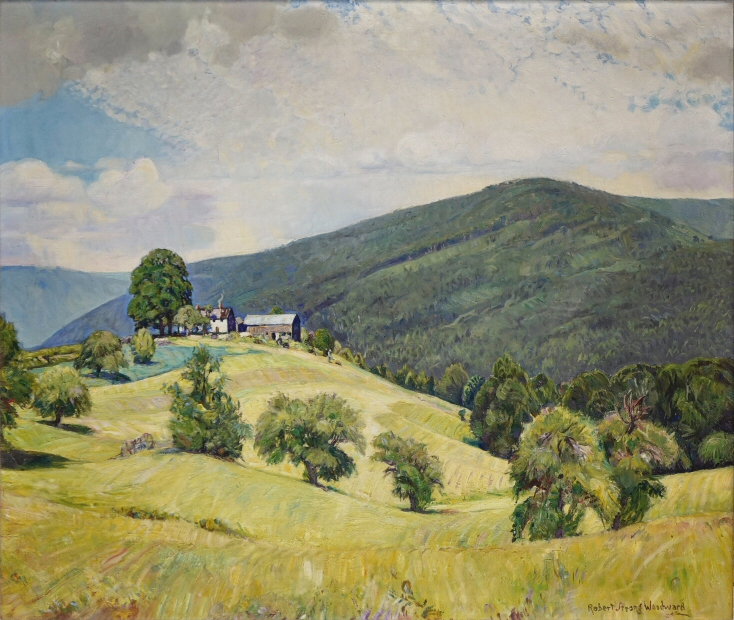Quick Reference
Winter 1942
A composite painting comprised
of scenes from two other paintings:
Upper/distance Just After Haying
Time and the lower/foreground
is Wind'll Blow Hill
Oil on Canvas
Landscape
Roads & Streets
25" x 30"
Vose Galleries, Boston, 1943
Mrs. F. Raymond Andrews
NA
Related Links
- See also the...
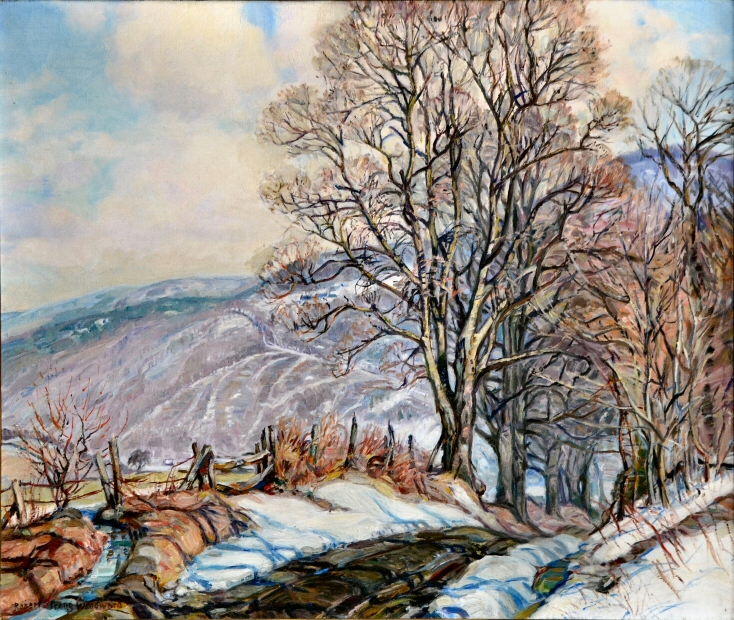 Roads & Streets Gallery to view related pieces.
Roads & Streets Gallery to view related pieces.
- See also Through October Hills to view related pieces.
- See also the...
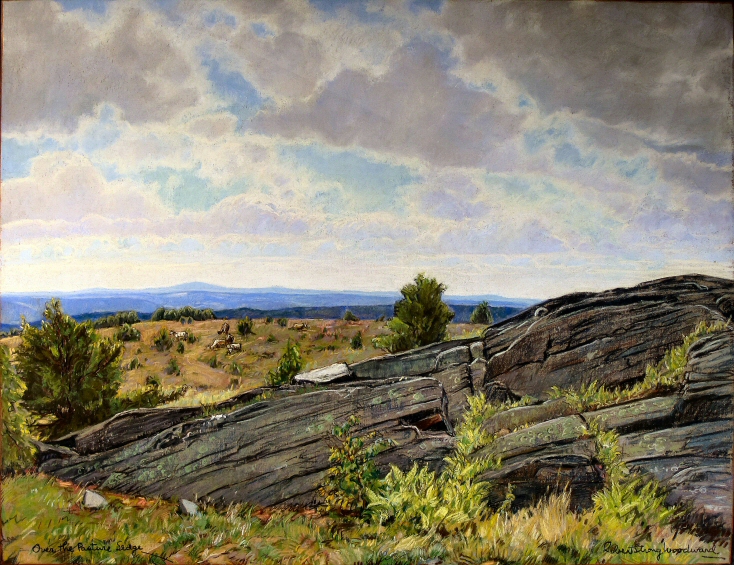 Rocks & Stone Walls Gallery to view related pieces.
Rocks & Stone Walls Gallery to view related pieces.
- See also New England in October to view related pieces.
- See also the...
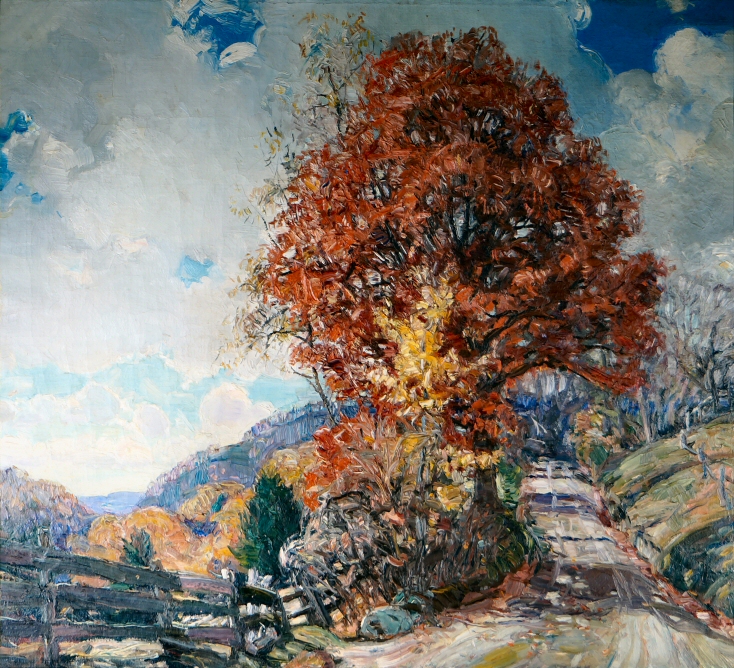 Burning Autumn Gallery to view related pieces.
Burning Autumn Gallery to view related pieces.
- See also Wind'll Blow Hill to view related pieces.
- See also Just After Haying Time to view related pieces.
Featured Artwork: In October Hills (The first of 3 similar paintings)
RSW's Diary Comments
734.png?url=photos/mountain_meadow(24)734.png)
 Mountain Meadow, 1944-'45
Mountain Meadow, 1944-'45
You can see that there is much less sky in this similar
painting. It is more rectangular, but also note the
grouping of trees to the left are very different as well.
actually the entire foreground is different than the
original painting
"Painted in 1944 [1942]. A brilliant autumn "composite" composed in the studio for a Vose client, which
was never bought by said client; road and walls in foreground taken from Aaron Baggs
Wind"ll Blow Hill, mountain, farm and view beyond (with orchard), taken from
Just After Haying Time. From this same theme, but with a heavy group of trees to the left. I made another
canvas (22 x 38) (also refused by the Vose client, but soon bought by Mr. and Mrs. Billings of Hatfield called
Through October Hills which see) Sold in late November 1947, through
Mr. Earl Perry to Newton Savings Bank, Newton 58, Mass., where with 2 other paintings it had been hanging since May,
1947."
Comments on the back of a sepia print:
"Sold to Mrs. F. Raymond Andrews of Greenfield day before yesterday, Oct. 15, 1945. Returned (as not suiting wallpaper) for November Paths."
Editor's Notes:
 Woodward was incorrect regarding the year
this painting was made. Exhibition records show it hung at the Vose Gallery in January of 1943 indicating it had to have
been made in 1942.
Woodward was incorrect regarding the year
this painting was made. Exhibition records show it hung at the Vose Gallery in January of 1943 indicating it had to have
been made in 1942.
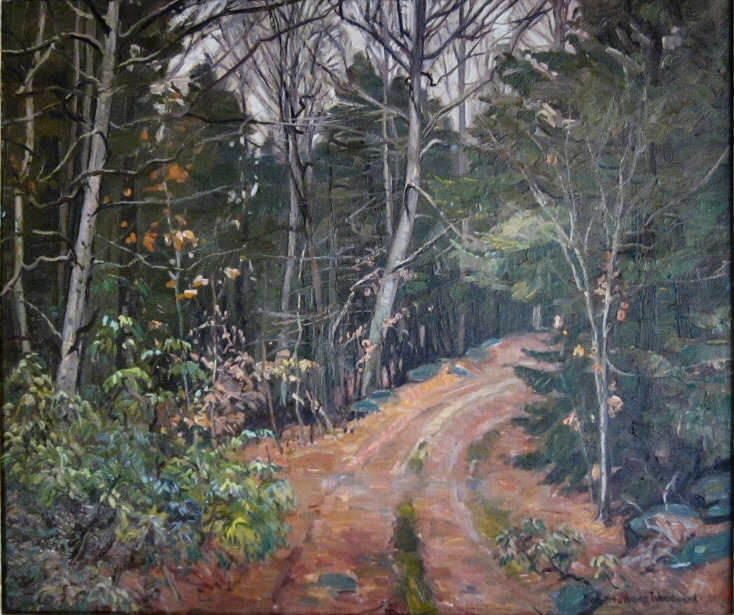
 November Paths, 1931, mentioned above
November Paths, 1931, mentioned above
 Woodward does not say
where he got the stonewall to the right of the road or the group of trees to the left and note that for the other two
paintings. The tree group is more pronounced.
Woodward does not say
where he got the stonewall to the right of the road or the group of trees to the left and note that for the other two
paintings. The tree group is more pronounced.
 It has been a mystery
to us as to why Woodward made so many composite paintings between 1938 and 1945.It is very uncharacteristic for someone who
always aspired to paint a scene as it is while adding his poetic interpretation to the piece. These scenes of the three
paintings mentioned on this page are about as romantic as you will see Woodward go professionally. Privately, he is a
romantic. It is the poetry and literature he read. Still, it was always a point of pride for him to not permit his romantic
notions into his art... and critics noticed it and commented on it as well.
It has been a mystery
to us as to why Woodward made so many composite paintings between 1938 and 1945.It is very uncharacteristic for someone who
always aspired to paint a scene as it is while adding his poetic interpretation to the piece. These scenes of the three
paintings mentioned on this page are about as romantic as you will see Woodward go professionally. Privately, he is a
romantic. It is the poetry and literature he read. Still, it was always a point of pride for him to not permit his romantic
notions into his art... and critics noticed it and commented on it as well.
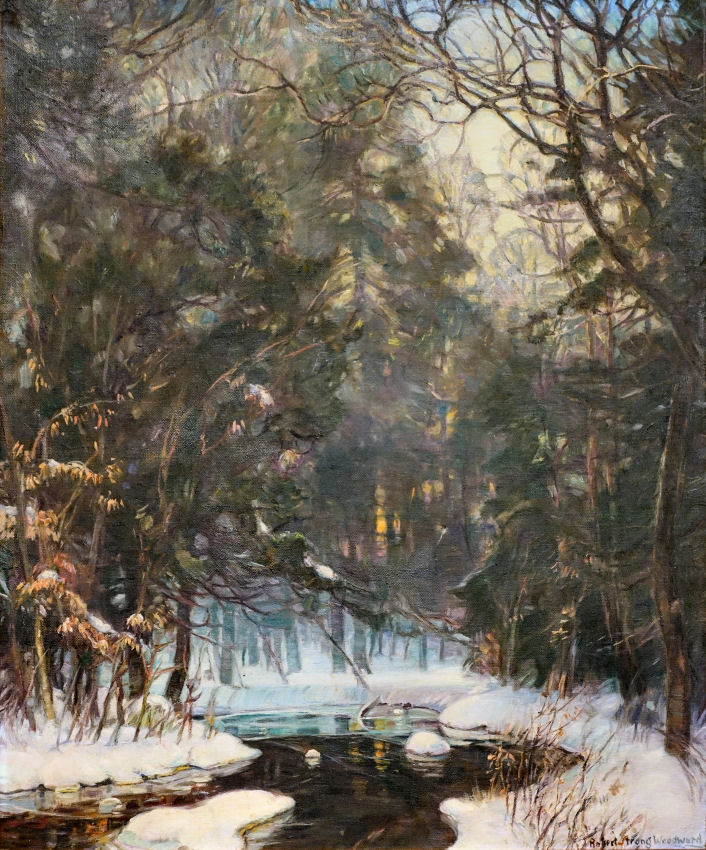
 Evening Mists, 1945, a repainted painting very
Evening Mists, 1945, a repainted painting very
similar to an earlier painting- Tranquil Hour, pre-1925
 It is perhaps also
worth noting that during the same period of time (1938-1945) Woodward also "re-painted," as he phrased it, numerous painting
he had stored for as long as 20 years, which is wonderful because a few of them are
Quintessential Redgate paintings. To see and compare the differing style as the artist grew and matured over the years
is such a treat. While this is wonderful, the question as to what Woodward was trying to do remains. Was he experimenting?
Or was he in a creative crisis? The second question is hard to wrap our heads around since the 1940s is the decade he won
most of his Awards. Still, maybe these experiments helped him grow just enough to elevate
higher.
It is perhaps also
worth noting that during the same period of time (1938-1945) Woodward also "re-painted," as he phrased it, numerous painting
he had stored for as long as 20 years, which is wonderful because a few of them are
Quintessential Redgate paintings. To see and compare the differing style as the artist grew and matured over the years
is such a treat. While this is wonderful, the question as to what Woodward was trying to do remains. Was he experimenting?
Or was he in a creative crisis? The second question is hard to wrap our heads around since the 1940s is the decade he won
most of his Awards. Still, maybe these experiments helped him grow just enough to elevate
higher.
To us the most bizarre thing about this phase of his career is that it is so well defined. We have only one
other example of Woodward painting a composite painting outside the time period and it was early in his career and he states
how rarely he does such things. He did re-paint paintings outside the time period but not as intentionally. He'd paint a scene,
not like it and paint it again but this was primarily within a few months to no more than a couple of years, not two decades.
Additional Notes
For reference, below are the two paintings used to compose this painting.

.png)

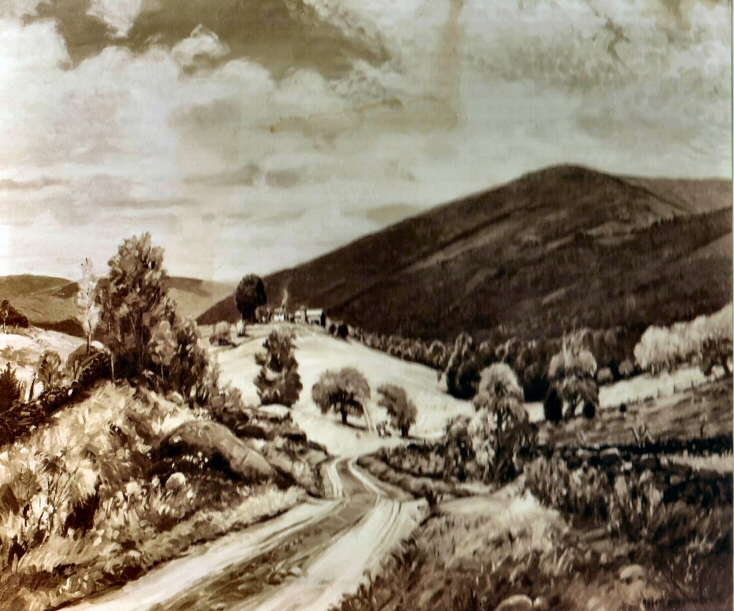
734.png?url=photos/windll_blow_hill(24)734.png)
